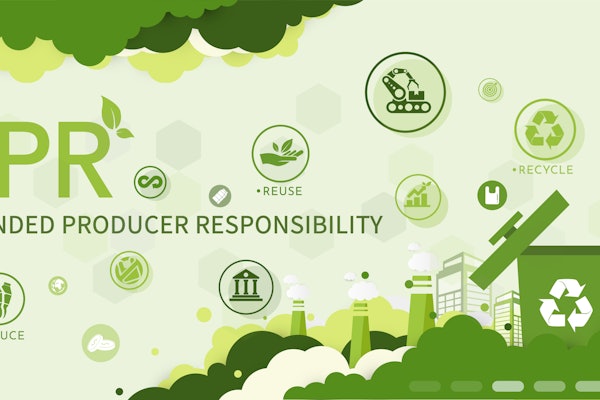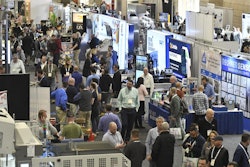Although 3D printing (3DP) technology has existed for decades, its disruptive potential has moved it into the spotlight. Also referred to as additive manufacturing and rapid prototyping, 3DP is even moving onto the radar screens for consumers and hobbyists who can design 3D objects on their computer and print everything from tchotchkes to chocolate to jewelry. At a much more sophisticated end of the spectrum are 3D-printed skin and organs that not too long ago would have sounded like science fiction.
Somewhere in the middle of those two application ranges, 3DP offers real-world benefits for manufacturing and packaging applications. Think prototypes, sample packs, small-volume runs, replacement parts for equipment, and alternatives to producing molds and tooling that can allow multiple changes and adjustments made at much more reasonable prices before buying tooling for commercial production.
These points of discussion were raised during the Nov. 3 presentation at Pharma EXPO Intl., “Application in Additive Manufacturing/3D Printing.” The 90-minute presentation was led by Carl Dekker, President, Met-L-Flo, Inc., with presentations by Sheku Kamara, Director, Rapid Prototyping Consortium, Milwaukee School of Engineering, and Don Smith, Manager Engineering Technology Resources at Baxter Healthcare Corp.
Pharma EXPO, co-located with PACK EXPO International Nov. 2-5 in Chicago, is a joint venture of PMMI, The Association for Packaging and Processing Technologies, and the International Society for Pharmaceutical Engineering.
Smith offered two recent examples of how Baxter has employed 3DP in secondary packaging applications. One was to hold glass vials that present safety and security issues when shipping. Smith said the company brought in vendors to work with Baxter personnel and came up with more than a dozen ideas, using plastic, glass, and corrugated materials. He said the company went through several design iterations and included a living hinge on the plastic device it selected. “For these prototypes, additive manufacturing works well and allows us to make deep-pocketed parts that are then vacuum-formed for wider production.”
Another prototype Baxter developed via 3DP was for holding syringes in place so that a plunger device would not move. Parts were made quickly and within a month a tool was ordered for production.
Dekker noted that medical devices, such as MRI machines and CT scanners, represent equipment that would make good candidates for additive manufacturing, due in part to their apparent lower-volume production needs.
Dekker said that bottle applications would also work well for 3DP since multiple sizes, shapes, and colors could be made in limited quantities. Same for mold halves.
And while more materials—and more robust materials—are becoming available for additive manufacturing, Dekker noted some drawbacks in the technology, including variances in part quality—often challenges due to fragility issues, and differences in printing equipment. Additional costs during production can also detract from potential benefits.
Kamara pointed out two broad classes of 3DP machinery. One, he noted, was concept-molding equipment that offices might employ that require minor technical knowledge and cost under $300,000 in general. Mainframe machinery, meanwhile, typically carries price tags north of $500,000 and tends to require laboratory environments to run.
The MSOE director offered a primer on the seven different 3DP technologies, listing each of their advantages, disadvantages, uses, what materials they work best with, etc. He said users must know upfront what they want from 3D-printed parts—low costs, high throughput, softness/hardness characteristics, etc.—before determining which of the seven printer types would be most effective in meeting that company’s needs.
Q&A session takeaways
During the session, one attendee noted that his company makes more than 1,300 different bottle SKUs, with more introduced virtually on a weekly basis. His immediate question was, “Why not go to Walmart and buy a 3D printer to develop samples?”
That may work well, replied one of the speakers, but be cautious because part quality issues, testing, and meeting regulations might make it more economically effective to invest in a higher-quality unit.
Smith was bullish on the technology, however, noting that it helps in creating designs upfront, reducing costs and the design time cycles.
Dekker also suggested 3DP could reduce the amount of scrap generated during prototype development and even help improve line safety, both for workers and for parts. He cited an example of a facility he visited in which tubes were being placed on a metal rack, occasionally causing tube damage. A 3D-printed rack made of plastic, he noted, could alleviate the damage issue.
On Oct. 30, Stratasys Ltd., a global provider of 3D printing and additive manufacturing products, announced a collaboration with Worrell, a design and product development company, to accelerate medical device development through the use of 3D-printed injection molding. The aim is to provide cost savings for 3D-printed injection molds and greatly reduce product development cycles.
A press release on the collaboration quotes Nadav Sella, Senior Manager of Manufacturing Tools at Stratasys: “Worrell is a leading design firm with the expertise and infrastructure necessary to integrate injection molding and 3D printing within the product development cycle. In an industry where products have the potential to save lives, we want to use this collaboration to demonstrate how medical device manufacturers can bring their products to market significantly faster than ever before.
“Medical device manufacturers traditionally face two main obstacles in getting medical devices to market: tooling costs and the FDA regulatory process. Traditional tooling is both costly and time-consuming, as new molds must be created every time a prototype is refined before manufacturing. To reduce potential iteration risks and tooling costs, Worrell uses Stratasys’ PolyJet-based 3D printers to create injection-molding tools and then inject the same materials that will be used in a finished medical device, creating higher-fidelity prototypes.”
“We were recently approached by medical device start-up, MedTG, to design and engineer a dual-flow needleless blood collection system that reduced the need for multiple injections, thereby increasing patient comfort and hospital efficiency. Utilizing 3D-printed injection molds to prototype the device, we were able to reduce the costs associated with traditional tooling by approximately 70%, as well as cutting times by 95%,” explained Kai Worrell, CEO at Worrell.
“Using 3D-printed injection molds, we are able to create a prototype for a fraction of the cost and in a matter of days compared to the eight-week lead time associated with traditional tooling processes. This revolutionary manufacturing process enabled by Stratasys PolyJet technology is now an integral part of our product development cycle, allowing us to provide better prototypes for care providers, while saving our clients considerable time and money.”
Brazil, IN-based MedTG. LLC, is described by Bloomberg.Businessweek as “a medical device company that develops specialized catheter devices and associated technologies. The products provide on-demand monitoring, measurement and patient diagnostics, such as temperature, glucose, electrolytes, and oxygen, through embedded sensors, uncontaminated blood draws, and simultaneous IV delivery of medicines and fluids.”
3DP disruptions
A recent report by PwC US (hcpgo.to/196) in conjunction with The Manufacturing Institute surveyed more than 100 industrial manufacturers. Results revealed that 67% of manufacturers surveyed are currently implementing 3DP either by experimenting with the technology or by using it for prototypes for final products. One in four respondents said they plan to adopt 3DP in some way in the future.
What are the potential disruptions attributable to 3DP? According to a recent Healthcare Packaging article on the report (hcpgo.to/197), they include the following:
• Accelerated new product development cycles, leading to getting products to market more quickly and frequently, especially when prototyping complex products.
• Open the doors to the “lot of one” module, allowing companies to avoid producing volumes of unpopular products.
• Impact the aftermarket of products, particularly for makers of products with long lives and high demand for parts replacement, parts repair, and obsolete parts.
• Shortening the supply chain to one link, eliminating those connecting development, prototyping, production, delivery, and warehousing of parts, causing potential supply chain restructuring.
• Lead to retraining the existing workforce or drawing in new talent with the skills to create digital designs and to oversee printing production.
“For some industries and some products, the concept of ‘on-demand’ manufacturing could radically change business models and supply chains,” said Bob McCutcheon, PwC’s U.S. industrial products leader. “We’re also seeing that the supply chain has become more local as the adoption of 3DP widens and as more companies are manufacturing closer to the end customer.”
Gardner Carrick, Vice President of The Manufacturing Institute said he doesn’t believe 3DP adoption will significantly affect manufacturing jobs overall.
“It’s more of a shift in the demands for more workers with technical know-how,” said Carrick. “The advancement in technology and how it’s changing the image of manufacturing for next-generation employees is attracting a new skillset that’s necessary on the shop floor. It’s the perception of manufacturing jobs becoming less blue collar and more white collar.”
3DP and product packaging
3DP may appear to be a futuristic technology, and that’s likely the case given its potential. But a recent application of a lip balm container by Anita’s Balm, Inc., shows the technology is in commercial use today (hcpgo.to/198).
In its Feb. 25, 2014 report, “How 3D Printing Technology Could Be Implemented into Product Packaging,” (hcpgo.to/199), 3D Printing.com reported that the 3DP process, “is fairly straightforward, creating a solid image by [the] process of accumulation or additive process, whereby differently shaped layers of material are laid down on top of one another. This varies from the subtractive processes of traditional printing methods, which rely on cutting or drilling to reduce the material.
“Inevitably, 3D printing provides the perfect venue for the creation of packaging, particularly flexible packaging.”
The report noted, “There is a massive selection on the market [specializing] in 3D printing machines, ranging from entry-level basic functionality to high-end, state-of-the-art technology, catered to industry leaders and designers with new prototypes frequently developed. Though initially high in price, supply and demand is bringing it down gradually and as more packaging design is integrated into its function, more improvements will be made and will become accessible to businesses of varying sizes.”
3DP’s future promise
Drilling down to the healthcare market, an Oct. 13, 2014 report, “The Road Ahead for 3D Printing,” (hcpgo.to/200), at Engineering.com said emerging and near-term future uses of 3DP may include the following:
• Plan surgery using precise anatomical models based on a CT scan or MRI
• Develop custom orthopedic implants and prosthetics
• Use 3D-printed cadavers for medical training
• Bioprint live tissues for testing during drug development
The report noted that while most 3D printers today use a single printhead, the use of multiple printheads simultaneously could result in increasing speed of product development by depositing material faster. Printers will likely be able to process a greater variety of material types in the future as well.
This report, sourced from PwC, summarized that, “today’s market for 3D printers and services is still largely bifurcated—at the low end are limited-function offerings of interest to hobbyists. At the high end are expensive printers that have a limited total available market. The key for market growth is the continuing development of printers in the middle price range to achieve advances in performance, in multi-material capability, and in printing complete systems. PwC expects these continuing developments to open the door to a disruptive expansion in the market.”
“Is 3D printing the future of medicine?” asked a Sept. 4, 2014 post on DoctorsAtYourHome.com (hcpgo.to/201). The technology, as described on the website, is already widely used for body parts, usually made of plastic or metal, such as teeth, limbs, hearing aids, and prosthetic limbs.
“The Holy Grail,” the site contended, “is to print a living organ for transplant using a patient’s own cells. Some experts predict this could be just a couple of decades away and potentially revolutionize organ transplants. Patients wouldn’t die waiting for organs, and their immune systems wouldn’t reject the organs.
“Bio-medical engineers use several methods to print an organ. The printer creates a plastic mold of the organ that can be covered with the human cells. Or the printer can jet the cells out inside a collagen-based gel that will hold it all together. The cells must grow on the plastic or collagen scaffold for several weeks before the organ could potentially work. After putting it into the body, the scaffold disintegrates, leaving only human tissue behind. For children, this would mean the tissues could grow with them, eliminating the need for surgeries as they grow.”
3DP is already employed to print skin, organs, etc. (hcpgo.to/202). In these instances, 3D bioprinting uses a person’s own cells to create a “perfect substitute that won’t be rejected by the body.”
Inside3DP’s website contains stories on the bioprinting of skin, a 3D-printed heart, 3D-printed vertebra, and even a 3D-printed brain (hcpgo.to/203). Here a 3D-printed model of an infant’s brain was used to help perform surgery of a baby suffering from Sturge-Weber syndrome.
The article asked, “As for 3D printing, it appears to be quite new and does make the headlines every time it is utilized in surgery or the medical field. It does make you wonder how long it will be before this technology becomes mainstream and stops making the headlines?”
Bioprinting
This offshoot of 3D printing aims to allow scientists and medical researchers to build an organ, layer by layer, using scanners and printers traditionally reserved for auto design, model building and product prototyping.
Source: Health.howstuffworks.com






















